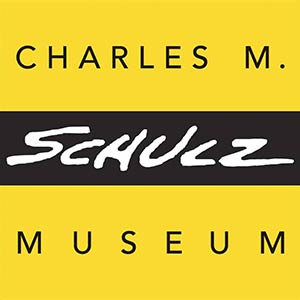In Memory of the Artist, Christo
The recent passing of Christo on May 31, 2020 brought with it sadness, but also many fond memories.
Christo and his partner in art and life, Jeanne-Claude, had been in Sonoma County for some time before the public became aware of them. The two of them had traveled all across the United States searching for the perfect landscape in which to unveil their installation art piece, Running Fence (1976), before finally landing on the rolling hills of western Sonoma County. It was there they began to introduce themselves to the ranchers to the west of Highway 101, and to explain their project to them.
By the time Sparky and I heard of the artists they had already won the hearts of a majority of the ranchers whose property the fence would traverse.
We were introduced to the artists by our friend and attorney, Ed Anderson—one of the two people who, 20 years later, would nudge and encourage the creation of the Charles M. Schulz Museum.
Ed and his wife Jeanne invited a small group to their home to meet the artists and view the documentary Valley Curtain (1974) about the Valley Curtain project which traversed a gorge in Rifle Gap, Colorado. Sparky was moved when, at the moment the curtain successfully unfurled from its rigging point on one side of the gap and almost magically traversed the canyon, the construction workers erupted into celebration at the success of the project. Sparky thought that if those men could recognize the beauty of that moment, perhaps the wider world could also.
One afternoon soon after, Sparky and I attended a meeting with the Board of Supervisors in the Santa Rosa County Building where attorney Ed Anderson was presenting the case arguing for permission for the project. In Ed’s mind this was a simple matter of property rights, and the landowners had the right to do what they wished with their property if it was not illegal. Many ranchers spoke in favor of the project.
It seemed as though everyone in Sonoma County had an opinion and fell on one side of the debate or the other. Was it art? Was it destructive to the environment and the animals? Were Christo and Jeanne Claude making money off our backs? No, they weren’t. The expensive projects that the couple created were funded by the sales of architectural renderings which were acquired by museums, many in Europe.
“Running Fence” was the talk of the county during the winter and spring of 1975-1976. While some people talked, others signed up to volunteer to work on the installation of the fabric panels.
The fence took shape over a period of a couple weeks and was unfurled mostly overnight and early the following morning. The county seemed to revel in the attention and the general festivities that marked the 14-day period that Running Fence was up.

From the Taschen art publication, “Christo and Jeanne-Claude.”
Following the installation, people drove along the country roads, seeing the landscape with new eyes. Friends and I biked a stretch of the fence, and I flew photographers over it, too. Sparky even celebrated the artist in his comic strip.

Peanuts © 1978 Peanuts Worldwide LLC
But that was not the end of the story as Christo and Jeanne-Claude would continue to return to Sonoma County to visit with the friends they had made in the course of working on the Running Fence project.
When creating the Charles M. Schulz Museum & Research Center, we knew we wanted to include a permanent exhibit commemorating “Running Fence.” To do this we acquired a large panel from the original installation and installed it next to the photograph and Sparky’s comic strip in the Biographical Gallery.

We invite Museum Visitors to touch a smaller swatch of the “Running Fence” material.
Soon after our 2002 opening, Christo and Jeanne-Claude returned to Sonoma County and visited the Museum where they saw our modest exhibit presenting “Running Fence” alongside one of the fabric panels and Sparky’s comic strip. It was then that I asked Christo about wrapping Snoopy’s doghouse. He replied that he, “couldn’t do that, the children would object,” but he quickly added that he could wrap Snoopy’s house. We awaited the delivery of the piece, a life-sized doghouse wrapped in tarpaulin, polyethylene, and ropes. Wrapped Snoopy House was unveiled in 2003 at a wonderful Museum event at which Christo, Jeanne-Claude, and Ed Anderson were in attendance.

Unveiling of Wrapped Snoopy House (2003) by Christo and Jeanne-Claude.

In this photo Christo and his wife Jeanne-Claude present Wrapped Snoopy House to Jean Schulz.

Wrapped Snoopy House by Christo, Charles M. Schulz Museum and Research Center.

“Wrapped Snoopy House-Project for the Charles M. Schulz Museum” lithograph by Christo.
You can read more about Christo’s Running Fence celebration in an earlier blog post from 2010: schulzmuseum.org/christos-running-fence-celebration-washington-d-c/
We are planning to reopen on July 8, and as eager as we are to welcome visitors, we hope you will come and celebrate our Christo and Jeanne-Claude ‘corner’ with new appreciation.
—Jean Schulz




